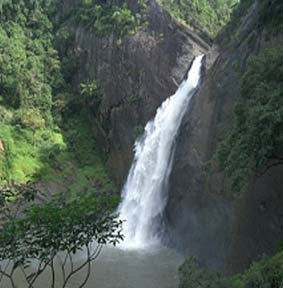Background and requirements
The Korean War, which began in June 1950, showed that World War II-era transports—C-119 Flying Boxcars, C-47 Skytrains and C-46 Commandos—were inadequate for modern warfare. Thus on 2 February 1951, the United States Air Force issued a General Operating Requirement (GOR) for a new transport to Boeing, Douglas, Fairchild, Lockheed, Martin, Chase Aircraft, North American, Northrop, and Airlifts Inc. The new transport would have a capacity for 92 passengers, 72 combat troops or 64 paratroopers, a range of 1,100 nmi (1,300 mi; 2,000 km), takeoff capability from short and unprepared strips, and the ability to fly with one engine shut down.Fairchild, North American, Martin and Northrop declined to participate. The remaining five companies tendered a total of ten designs: Lockheed two, Boeing one, Chase three, Douglas three, Airlifts Inc. one. The contest was a close affair between the lighter of the two Lockheed (preliminary project designation L-206) proposals and a four-turboprop Douglas design.
The first flight of the YC-130 prototype was made on 23 August 1954 from the Lockheed plant in Burbank, California. The aircraft, serial number 53-3397, was the second prototype but the first of the two to fly. The YC-130 was piloted by Stanley Beltz and Roy Wimmer on its 61-minute flight to Edwards Air Force Base; Jack Real and Dick Stanton served as flight engineers. Kelly Johnson flew chase in a P2V Neptune.[4]
[edit] Production
After the two prototypes were completed, production began in Marietta, Georgia, where more than 2,300 C-130s have been built.[5]The initial production model, the C-130A, was powered by Allison T56-A-9 turboprops with three-blade propellers. Deliveries began in December 1956, continuing until the introduction of the C-130B model in 1959. Some A models were re-designated C-130D after being equipped with skis. The newer C-130B had ailerons with increased boost — 3,000 psi (21 MPa) versus 2,050 psi (14 MPa) — as well as uprated engines and four-bladed propellers that were standard until the J-model's introduction.
[edit] C-130A model
[edit] C-130B model
The C-130B model was developed to complement the A-models that had previously been delivered,and incorporated new features, particularly increased fuel capacity in the form of auxiliary tanks built into the center wing section and an AC electrical system. Four-bladed Hamilton Standard propellers replaced the Aero Product three-bladed propellers that distinguished the earlier A-models. B-models replaced A-models in the 314th and 463rd Troop Carrier Wings. During the Vietnam War four squadrons assigned to the 463rd Troop Carrier/Tactical Airlift Wing based at Clark and Mactan Air Fields in the Philippines were used primarily for tactical airlift operations in South Vietnam. In the spring of 1969 463rd crews commenced COMMANDO VAULT bombing missions dropping M-121 10,000 lb (4,534 kg) bombs to clear "instant LZs" for helicopters. As the Vietnam War wound down, the 463rd B-models and A-models of the 374th Tactical Airlift Wing were transferred back to the United States where most were assigned to Air Force Reserve and Air National Guard units. Another prominent role for the B-model was with the United States Marine Corps, where Hercules initially designated as GV-1s replaced C-119s. After Air Force C-130Ds proved the type's usefulness in Antarctica, the US Navy purchased a number of B-models equipped with skis that were designated as LC-130s. An electronic reconnaissance variant of the C-130B was designated C-130B-II. 13 aircraft were converted and operated under the SUN VALLEY program name. They were operated primarily from Yokota Air Base, Japan. All reverted to standard C-130B cargo aircraft after their replacement in the reconnaissance role by other aircraft. The C-130B-II was distinguished by its false external wing fuel tanks, which were disguised signals intelligence (SIGINT) receiver antennas. These pods were slightly larger than the standard wing tanks found on other C-130Bs. Most aircraft featured a swept blade antenna on the upper fuselage, as well as extra wire antennas between the vertical fin and upper fuselage not found on other C-130s. Radio call numbers on the tail of these aircraft were regularly changed so as to confuse observers and disguise their true mission.[edit] C-130E model
The extended range C-130E model entered service in 1962 after it was developed as an interim long-range transport for the Military Air Transport Service. Essentially a B-model, the new designation was the result of the installation of 1,360 US gal (5,150 l) Sargent Fletcher external fuel tanks under each wings (mid-section) and more powerful Allison T-56-A-7A turboprops. The E model also featured structural improvements, avionics upgrades and a higher gross weight.[edit] C-130F / KC-130F / C-130G models
The KC-130 tankers, originally C-130Fs procured for the US Marine Corps (USMC) in 1958 (under the designation GV-1) are equipped with a removable 3,600 US gal (13,626 l) stainless steel fuel tank carried inside the cargo compartment. The two wing-mounted hose and drogue aerial refueling pods each transfer up to 300 US gal per minute (19 l per second) to two aircraft simultaneously, allowing for rapid cycle times of multiple-receiver aircraft formations, (a typical tanker formation of four aircraft in less than 30 minutes). The US Navy's C-130G has increased structural strength allowing higher gross weight operation.[edit] C-130H model
The United States Coast Guard employs the HC-130H for long range search and rescue, drug interdiction, illegal migrant patrols, homeland security, and logistics.
From 1992 to 1996 the C-130H was described as a C-130H3 by the USAF. The 3 denoting the third variation in design for the H series. Improvements included a partial glass cockpit (ADI and HSI instruments), a more capable APN-241 color radar, night vision device compatible instrument lighting and an improved electrical system using Bus Switching Units to provide 'clean' power to the more sensitive upgraded components.
